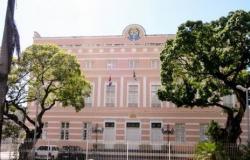The climatic conditions from December 2023 to February 2024 placed dairy cattle in Rio Grande do Sul in thermal discomfort situationcausing a drop in production.
The Gaucho animals, of European origin, faced with difficulty the combination of high maximum temperatures and high relative humidity. The analysis was released this Wednesday, 27/03, by the Department of Agricultural Diagnosis and Research of the Secretariat of Agriculture, Livestock, Sustainable Production and Irrigation (Seapi). The bad moment is confirmed by representatives of rural producers and adds to other adversities faced by the sector.
The statement released by Seapi analyzes meteorological conditions such as rainfall, temperature and air humidity. Using the Temperature and Humidity Index (ITU), the publication documents and identifies thermal comfort and discomfort ranges to which cattle were subjected, estimating the effects on milk production.
“The association of minimum and maximum temperatures and high relative humidity triggered situations of thermal heat stress throughout the quarter, mainly in February, in which the animals were in thermal comfort for only 30.5% of the period evaluated. In fact, there were situations dangerous to the animals’ health during 13.9% of that month”, details researcher Ivonete Tazzo, one of the authors of the work.
In the quarter evaluated, the regions of the Southeast and Northeast mountains had the highest percentages of thermal comfort, while Vale do Uruguai and Baixo Vale do Uruguai had the lowest values. The municipalities of Passo Fundo and Bento Gonçalves were the only ones in which no emergency situations were recorded throughout the season. Potential estimates of drop in daily milk production due to meteorological conditions, they were more pronounced in cows with higher productivity.
“The average percentages of individual daily loss were between 22% and 34%, if management measures aimed at mitigating climate effects were not adopted by rural producers”, adds Ivonete. In 13 municipalities, the estimated drop in daily milk production was more than four kilos, highlighting the possible largest losses recorded for Maçambará (5.1 kg), Itaqui (4.8 kg) and Uruguaiana (4.7 kg) in February.
The vice-president of the Federation of Agricultural Workers of Rio Grande do Sul (Fetag/RS), Eugênio Zanetti, highlights that, in addition to the direct effect on animals, the climatic conditions favored the development of fungi in the soil and the drop in corn production intended for livestock feed.
The executive secretary of the Dairy and Derived Products Industry Union (Sindilat), Darlan Palharini, highlights that the period is also “off-season”, transition from pastures. It’s a period that always gets more difficult.” Similar observations are made by the coordinator of the Joint Milk Producers/Industries Council of the State of Rio Grande do Sul (Conseleite), Allan André Tormen.
The information is from Correio do Povo, adapted by the MilkPoint team.






